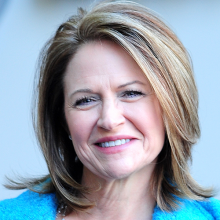Pam Parisian has led several big projects critical to the evolution of AT&T, the world's largest telecommunications company. As AT&T's President of Technology Development, Parisian led the team that integrated DIRECTV with AT&T. Her team has helped revolutionize the in-store experience, making AT&T one of the first companies to move its sales reps from working behind the register to working alongside customers, using iPads. And that's not all: Parisian also served as executive sponsor of AT&T’s application rationalization program, which has helped retire more than 3,800 applications, saving the company nearly a billion dollars annually.
For her leadership, Parisian recently won the Super Global Dallas CIO of the Year Award from the Dallas CIO Leadership Association. We asked Parisian to share her approach to complex projects, what she's doing to get her organization of 8,400 employees to move faster, and how she's cutting technical debt.
The Enterprisers Project (TEP): You have led several big projects critical to AT&T’s evolution as a company. From a leadership perspective, how do you approach taking on complex projects of such scale?

Parisian: One of the keys to successfully leading a complex, large-scale project is to be engaged and ready to sweat the details while also being able to inspire and motivate teams by conveying why their work matters. At every step, project leaders need to anticipate what could go wrong and proactively mitigate those risks and remove hurdles as they surface. But our approach to every project begins the same – with the customer experience in mind.
At the outset of each project, we partner with our client stakeholders to align on business strategy and expected outcomes. Getting grounded on the business opportunity and customer experience we’re striving for is critical, so we can identify the current or emerging technology that will help us achieve those outcomes. Then, teams are assembled. Leaders, team members, and other partners with the right skills for the project are brought together to build a roadmap for delivery.
[ Do you give your team enough actionable feedback? See our related article: How to give better feedback to employees. ]
It’s important to provide forums for these team members to periodically sync and level-set on status. Especially during a large-scale project, you’ll need to iterate the process periodically as new and unexpected items come up through the project lifecycle.
Getting to market faster
TEP: Moving faster is near the top of every CIO’s wish list. How are you positioning your technology organization of 8,400 employees to work faster and more collaboratively?
Parisian: That’s a great question. Our customers and business partners have continued to stress the importance of speed, so we’ve made a lot of changes over the last couple of years to get to market faster.
First, we’ve found that having teams located together and able to collaborate face-to-face really speeds up the development process and yields a product that better meets the customer’s needs. So, we’re co-locating with our business partners wherever it makes sense. To amplify the benefits we’re seeing from co-location, we’ve also begun to implement Scaled Agile and DevSecOps, which puts our developers in collaboration directly with the business.
We have launched several strategic programs leveraging the Scaled Agile Framework (SAFe) and are seeing a 33 percent improvement on speed to market versus non-SAFe projects. While we have some DevSecOps in place today, we are now scaling that across the majority of our organization by restructuring and making the necessary cultural, process, and technology changes to support it.
Additionally, we’ve moved to a new value streams-based funding model that allows our business partners the ability to drive priorities and make quick decisions. As a result, we’re seeing improvements in the funding and planning phases.
Finally, we’re still driving to a microservices architecture, with an end-of-year target of 1,000 in production. We’re halfway there with more than 500 microservices enabled, and we’re already seeing 50 to 80 percent improvement in productivity, including lower application downtime as well as faster code merge time, developer instance setups, and defect turnaround time.
With these and other changes, we’ve improved our speed to market by 37 percent since 2016, and are well on our way to our 45 percent goal by end of year. We expect even more significant improvements in the years ahead.






Comments
Really this is very good idea to save operating costs. I think rationalization would be great challenges however it was handled well so it could save huge amount of money.